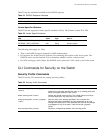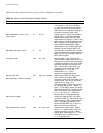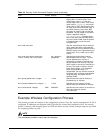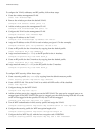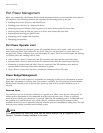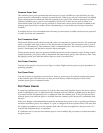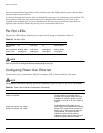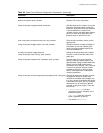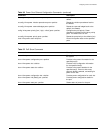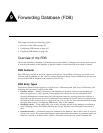
Port Power Management
Summit 300-48 Switch Software User Guide 97
Common Power Pool
The common power pool represents the total amount of power available on a per-slot basis, less any
power reserved or allocated to currently powered devices. When a new device is discovered, its defined
power requirements are subtracted from the common power pool. If the common pool does not have
sufficient available power, power is not supplied to the device. In this case, the port is placed in a
power-denied state. The device can be powered at a later time if more power becomes available to the
common power pool due to another device disconnecting or if previously reserved power becomes
available.
If multiple devices are in the denied state and more power becomes available, the devices are powered
in order of priority and connection.
Port Connection Order
The Summit 300-48 switch software tracks the order of connection for powered devices. The connection
order is recorded at the time a device is first discovered and classified. The connection order is reset if
the device is disconnected. This connection order is maintained even if the switch is powered down or
power is interrupted, and the device must be discovered again.
During system startup, ports are powered initially based only on the connection order. During normal
system operations, port power order is determined first based upon priority, then discovery time. Thus,
the highest priority port with the earliest discovery time is powered first.
Port Power Priorities
You can set the priority of a port to low, high, or critical. Higher priority ports are given precedence in
powering sequence.
Port Power Reset
You can set ports to experience a power-down, discover, power-up cycle without returning the power
to the common pool. This allows you to reset powered devices without losing their claim to the
common power pool or connection order.
Port Power Events
If a port has sufficient reserved power for a newly discovered and classified device, the device receives
power. If additional power is required and the common pool has sufficient available power, the device
is powered and the incremental power is subtracted from the common pool. If the port does not have
reserved power, but sufficient power is available from the common pool, the power is subtracted from
the pool.
Port power budget is determined based upon the maximum class power levels or operator specification,
not actual consumed power. For example, if a port is configured with an operator limit of 20 watts and
the violation precedence is set to the operator limit, then 20 watts is budgeted for the port even if a 5
watt 802.3af compliant device is connected.
If a sufficient mix of reserved and common power is not available, the port enters a denied state and is
not given power.



